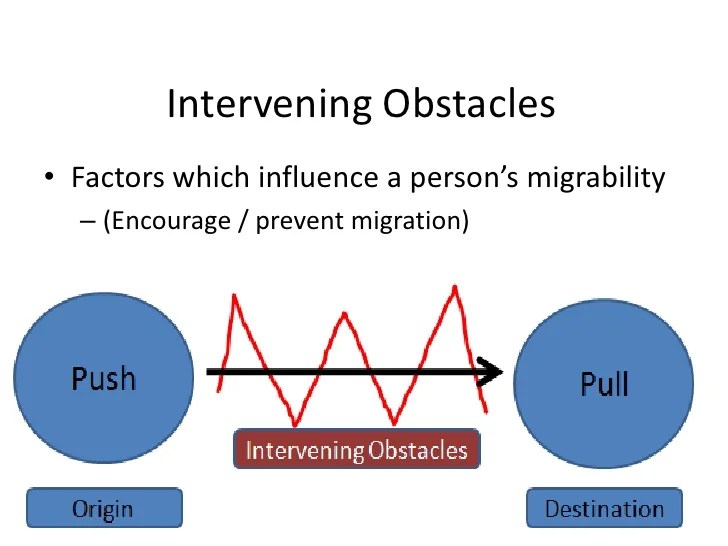Delving into the realm of intervening obstacle ap human geography, this exploration unveils the profound impact that physical barriers have on human activities and settlement patterns. From towering mountain ranges to vast oceans, intervening obstacles present challenges and opportunities that have shaped the course of human history.
This comprehensive analysis examines the diverse types of intervening obstacles, their far-reaching effects, and the ingenious methods employed to overcome them. Through captivating case studies and insightful illustrations, this discourse provides a comprehensive understanding of the intricate relationship between humans and the physical environment.
Definition of Intervening Obstacle: Intervening Obstacle Ap Human Geography

An intervening obstacle is a natural or human-made barrier that hinders the movement of people, goods, or ideas. These obstacles can be physical, such as mountains, rivers, or deserts, or they can be cultural, such as language barriers or political boundaries.
Intervening obstacles can have a significant impact on human activities, shaping settlement patterns, economic development, and cultural exchange.
Types of Intervening Obstacles, Intervening obstacle ap human geography
Intervening obstacles can be categorized into two main types: physical and cultural. Physical obstacles include:
- Mountains:Mountain ranges can be impassable barriers, hindering movement and communication.
- Rivers:Rivers can be difficult to cross, especially during floods or in areas with strong currents.
- Deserts:Deserts are vast, arid regions that can be difficult to traverse due to extreme temperatures, lack of water, and shifting sands.
- Oceans:Oceans are major barriers to movement, requiring specialized transportation and infrastructure.
Cultural obstacles include:
- Language barriers:Differences in language can make communication and understanding difficult.
- Political boundaries:Political boundaries can restrict movement and trade, creating barriers between different countries or regions.
- Cultural differences:Cultural differences can lead to misunderstandings and conflicts, hindering interaction and exchange.
Answers to Common Questions
What are the different types of intervening obstacles?
Intervening obstacles can be categorized into natural barriers (e.g., mountains, rivers, deserts) and human-made barriers (e.g., borders, infrastructure).
How do intervening obstacles impact human activities?
Obstacles can hinder transportation, communication, and trade, but they can also create opportunities for resource extraction, tourism, and strategic defense.
What are some methods used to overcome intervening obstacles?
Humans have employed various methods to overcome obstacles, including building bridges, tunnels, canals, and developing new technologies.

